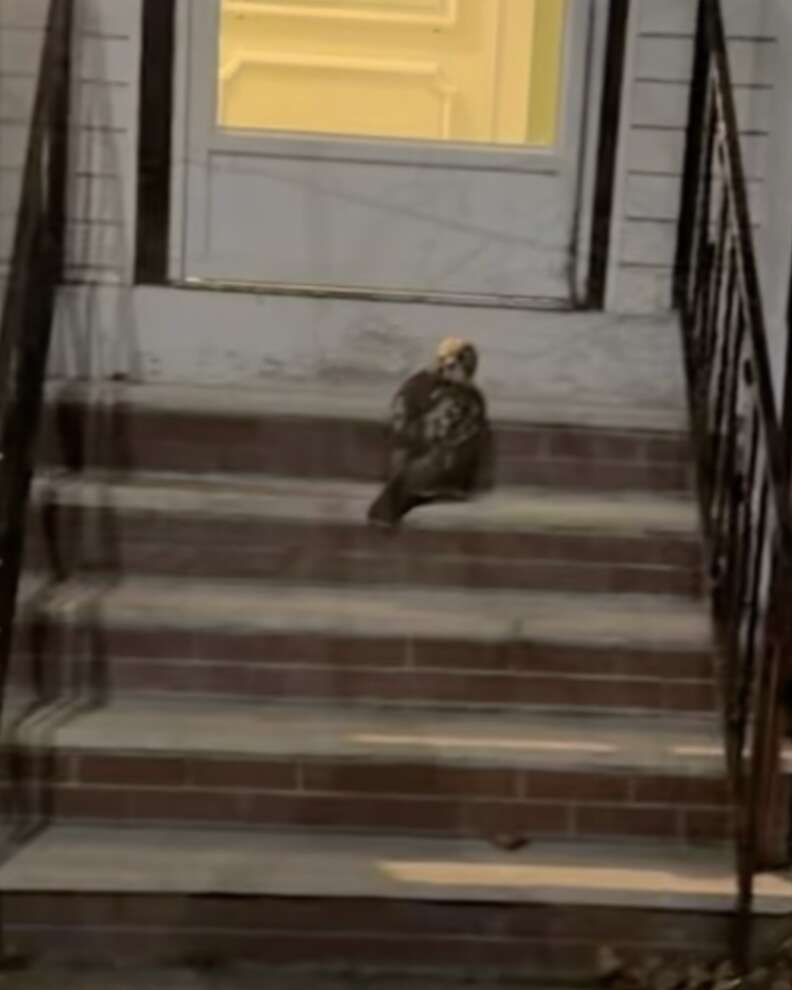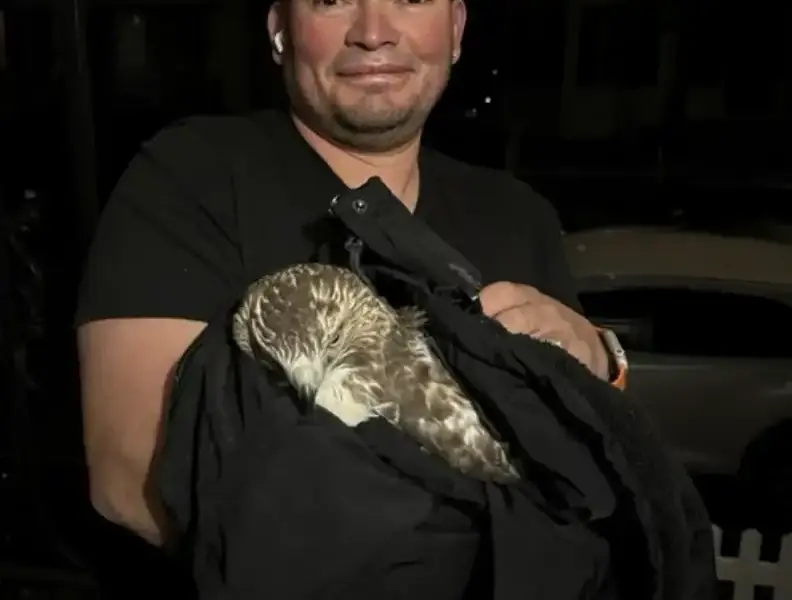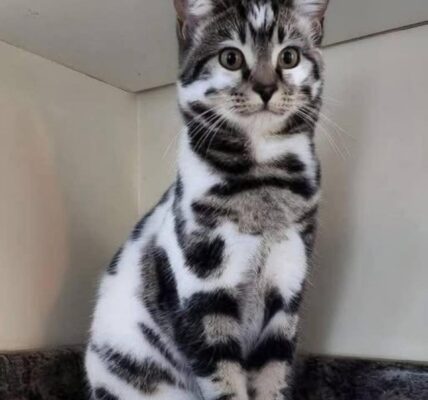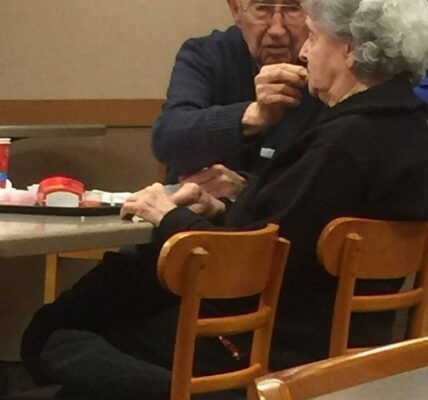On an ordinary evening walk, a man and his dog stumbled upon something far from ordinary—a figure hunched quietly on a neighbor’s front stoop. At first, it looked like just another shadow in the fading light. But as they got closer, the man realized it was a red-tailed hawk, sitting motionless, clearly in distress.
Unlike most wild hawks who would’ve flown off in a flash, this one didn’t move. That alone was a red flag.

“He noticed the hawk wasn’t able to fly away, which set off alarm bells,” said Priya Patel, wildlife medical director at the New England Wildlife Centers (NEWC). “Normally, they don’t like to be around people.”
The man acted quickly. He gently wrapped the bird in his jacket and transported him to the wildlife center, where Patel and her team immediately got to work.
At first glance, the hawk had no visible injuries, but something was clearly wrong. One of his wings was swollen, yet there were no fractures or wounds—an unsettling clue that pointed to something more insidious: poisoning.
A Silent Threat: Rodenticide
Patel suspected the hawk had ingested rodenticide, a common but deadly poison used to kill rodents. Unfortunately, these toxins don’t stop with rats. When predators like hawks eat poisoned prey, the chemicals build up in their systems, wreaking havoc on their health.
After blood testing, Patel confirmed the diagnosis: the hawk had consumed second-generation anticoagulant rodenticides (SGARs). These poisons prevent blood from clotting, often leading to internal bleeding, swelling, and slow, painful deaths.
But this hawk had a fighting chance.

Patel began treatment immediately—vitamin K to restore his blood’s ability to clot, pain medication to ease his discomfort, and fluids to help flush out the toxins.
A Long Road, But Not Hopeless
“This isn’t our first case,” Patel shared. “Unfortunately, we’ve seen a lot of poisoned animals—and as the poisons get stronger, it’s taking longer to save them. We’ve treated some hawks for almost a year.”
Despite the challenges, there’s hope for this bird.
Although early in recovery, the hawk is already showing signs of improvement, responding well to treatment and beginning to regain strength.

With months of care ahead, Patel and her team are cautiously optimistic. When the hawk is finally strong enough, they’ll do what they always hope to do—release him back into the wild, where he can soar once more.
What You Can Do
Rodenticides are an invisible danger, not only to rodents but to every creature that eats them. You can help protect wildlife like this hawk by choosing safer pest control alternatives:
-
Seal up entry points in your home or building.
-
Secure food waste and trash that attracts rodents.
-
Use humane traps instead of poison or glue traps.
These small changes can make a big impact—and give animals like this hawk a better shot at survival.
This hawk’s story could’ve ended silently on a front stoop.
Instead, it’s turning into one of healing, survival, and second chances—thanks to one kind passerby who chose not to walk away.




